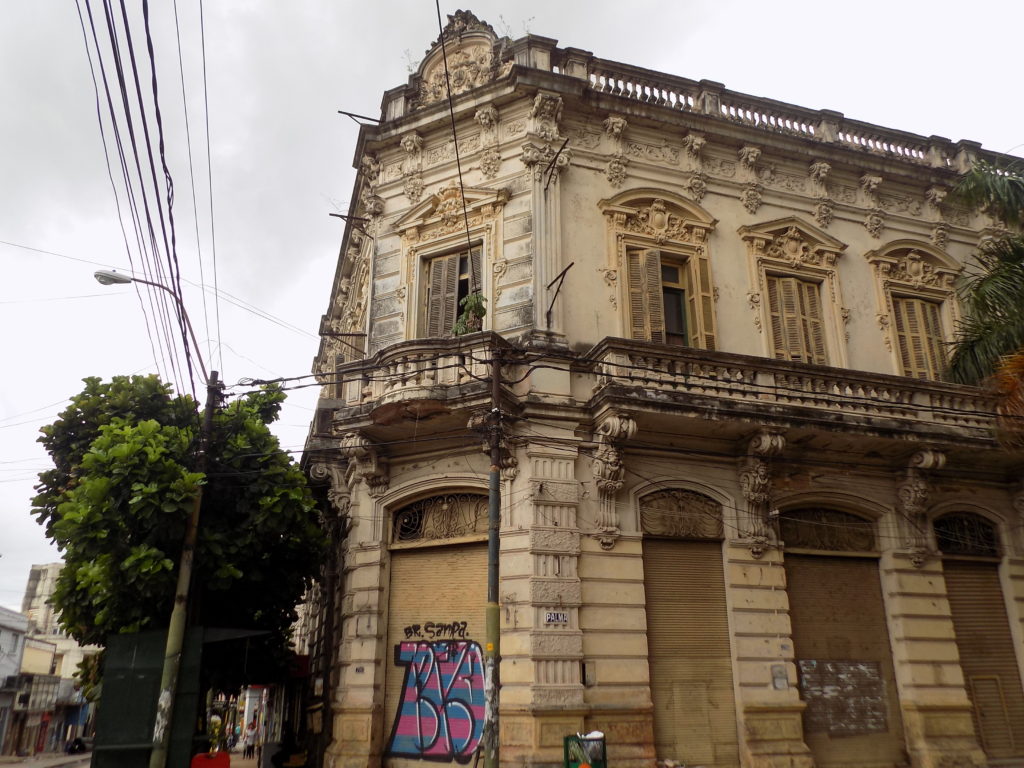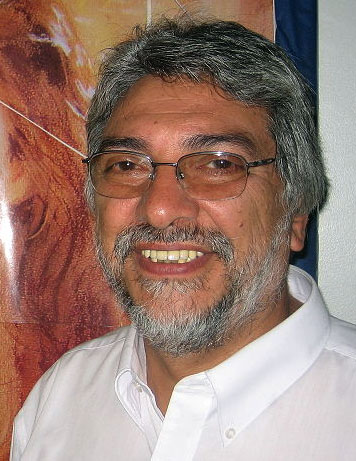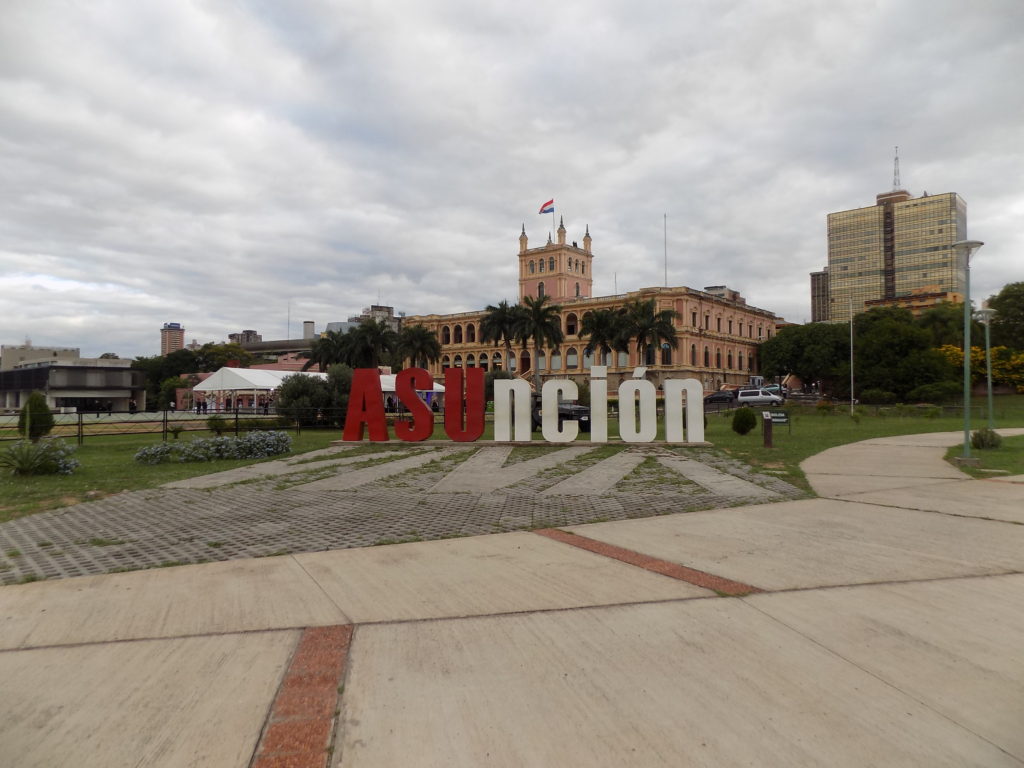One final echo and a cautionary note.
Previously I wrote about Fernando Lugo the one-time Catholic bishop who was elected president of Paraguay in 2008. Lugo’s election ended a 61-year hold on power by the Colorado Party and they were none too happy about it. WikiLeaks posted a U S embassy cable that the Americans were well aware of the efforts of at least two Colorado Party politicians who were conspiring to find a way to oust Lugo from office – preferably through impeachment.
Barely a year into his term, Lugo faced accusations of having fathered at least three children out of wedlock – at least one of whom was conceived when he was still a bishop.
[Photo of Fernando Lugo from Wikipedia By FernandoLugoAPC2008, CC BY-SA 4.0.]
But those accusations were only the beginning of Lugo’s problems which included charges of nepotism and a lack of proper national security.
Pressure continued to build and in May 2012 a group of landless farmers occupied land they said had been illegally taken from them during the Stroessner regime. The owner of the land was an ex-Senator from the Colorado Party. The pressure built and reached its crescendo on 15 June 2012 when 17 of those farmers were killed in a clash with the police who were trying to evict them.
Less than a week later, on 21 June, citing these deaths and the other issues mentioned above, Paraguay’s lower chamber – The Council of Deputies – voted overwhelmingly to impeach Lugo and the Senate held the trial the next day. Lugo had been given precisely two hours to prepare his defense.
Regional condemnation of the impeachment came from countries as politically diverse as Argentina, Chile, Colombia, the Dominican Republic, and Ecuador. For many in Latin America, Lugo’s removal had clear echoes of the 2009 ouster of Manuel Zelaya in Honduras. Supporters of Zelaya’s removal defended it as legal and constitutional while others across the political spectrum denounced it as a coup. Lugo’s ouster was viewed with a similar dichotomy.
Here’s how the Encyclopedia Britannica summarizes the events in Honduras:
In 2009 Zelaya organized a national referendum that, if passed, would have allowed him to revise the constitution and run for reelection, but on the morning of June 28—the day the referendum was to be held—the military ousted him from office. The military and the National Congress had opposed the referendum, which also had been declared illegal by the Supreme Court. Later that day, after the military flew Zelaya to Costa Rica, the National Congress voted him out of office and elected congressional leader Roberto Micheletti as acting president. Arrest warrants were subsequently issued for Zelaya, and the nearly 20 charges against him included treason and abuse of power. The United Nations, condemning the ouster, passed a resolution that continued to recognize Zelaya as the rightful Honduran president. The Organization of American States showed support for Zelaya by suspending the OAS membership of Honduras.
Lugo himself accepted his ouster, saying that any legal and realistic chance of reinstating him ended when the Supreme Court of Paraguay confirmed his removal. He was then elected to the Senate in 2013.
(For the rest of us, but for Americans in particular, the cautionary note should require a single word – Venezuela.)
Nuestra Señora Santa Maria de la Asunción.
I think we can all be happy that just as we all call the largest city in California simply Los Angeles (rather than by the name under which it was founded – El Pueblo de Nuestra Señora de los Angeles de Porciuncula) we do the same with Nuestra Señora Santa Maria de la AsunciĂłn -the capital city of Paraguay. We simply call it AsunciĂłn.
Walking around AsunciĂłn, which was founded when the Spanish completed a fort on the site on 15 August 1537, it’s almost hard to believe that the city is experiencing something of a rebirth. For many years in the first decade of this century AsunciĂłn regularly topped the list of the world’s least expensive cities. Today, this city of slightly more than 525,000 people (2,200,000 in the metropolitan area) can’t be found in the top (or bottom) ten. According to gobankingrates.com, 41 cities now have lower costs of living than AsunciĂłn. In fact, only one city in South America has a lower cost of living (and I will have a bit of an adventure in the airport there) – Santa Cruz, Bolivia.
While the Presidential Palace or Palacio de LĂłpez (seen behind the sign in the photo above) presents a lovely exterior, in the small area of the city center we explored on our brief walk between arriving at the hotel and our unfathomably inexpensive dinner at what Berner termed one of the top restaurants in the city, we were more likely to see buildings like this one.
Located on the east bank of the Paraguay River, Asunción is one of the oldest cities in South America and is known as the Mother of Cities because it was from this location that expeditions left to establish other cities such as Santa Cruz de la Sierra in Bolivia and the second foundation of Buenos Aires.
There was a time in its history when AsunciĂłn was the center of a large Spanish colonial province because it provided good access to both the coast via the Paraguay River into the Rio de la Plata and also to the Matto Grosso in Brazil and other parts of the interior. Eventually, the Spanish moved the administration to Buenos Aires lessening AsunciĂłn’s importance and now, as we’ve seen, both the city and the country are struggling to recover from a century and half old war.
Since we did little else in AsunciĂłn other than taking a brief walk, eating dinner, and spending the night in a hotel, it’s time to move on to my adventure crossing the border into Bolivia and the shock of arriving in El Alto and La Paz. And I’ll recount that in the next post.

